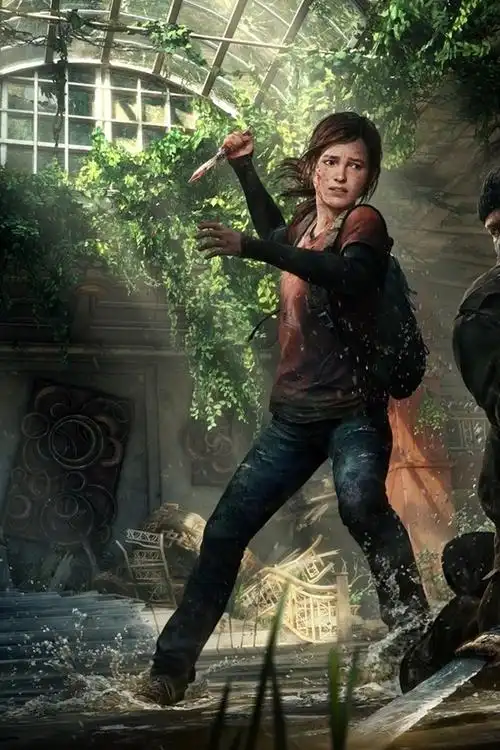The Unseen Depths: A Look into the Research Process Behind Deep Game News Articles
In the fast-paced world of video game journalism, a steady stream of news, announcements, and quick updates floods our feeds daily. Yet, standing apart from this torrent are the deep, investigative, or analytical features that don’t just report what happened, but explain the why and the how. These are the articles that provide genuine insight, challenge preconceptions, and add lasting value to the discourse. The creation of such content is not a matter of quick transcription or paraphrasing a press release; it is a meticulous, multi-stage research process that operates more like a scholarly investigation than traditional reporting. This article pulls back the curtain on that very process.
Phase 1: The Spark – Identifying a Worthy Subject
The journey begins not with a press kit, but with a question. A deep game news article is often born from a pattern, a curious anomaly, or a complex event that demands unpacking. The spark could be:
- A Lingering Mystery: Why was that highly anticipated game suddenly cancelled?
- A Cultural Phenomenon: What does the explosive success of a specific indie game say about the current market or player psychology?
- A Technical Deep Dive: How did a development team overcome a seemingly impossible engine limitation?
- A Historical Analysis: Tracing the evolution of a genre or a specific game mechanic over decades.
- An Investigative Lead: Whispers of poor labor practices within a specific studio that require verification.
This initial idea is vague. The researcher’s first task is to refine this spark into a specific, answerable thesis question. Instead of "I want to write about the game's cancellation," it becomes "This article will uncover the specific technical and managerial missteps that led to Project X's cancellation, based on testimony from former developers."
Phase 2: The Deep Dive – Aggressive and Critical Sourcing
With a thesis in hand, the real work begins: sourcing information. This far exceeds a simple Google search. Researchers employ a multi-pronged approach:
-
Primary Sources: This is the gold standard. It involves tracking down and directly engaging with individuals who have firsthand knowledge. This means identifying and reaching out to developers, artists, programmers, composers, and even former employees (often on condition of anonymity). This step requires building trust, crafting precise questions, and often conducting lengthy interviews. Reviewing original documentation, such as patent filings, court documents (for legal disputes), or archived early build footage, also falls under this category.
-
Secondary Sources: This involves critically consuming existing work on the topic. A researcher will devour every interview, podcast appearance, forum post (from reputable developers), and previous article ever published that touches on the subject. The key here is corroboration. One interview is an anecdote; five interviews stating the same fact, from different angles, become evidence. Researchers must be acutely aware of bias in these sources—a PR-led interview will have a different slant than a developer’s personal blog post.
-
Tertiary Sources & Data Mining: For analytical pieces, this can involve hard data. Using tools like SteamDB to analyze player counts and sales patterns, examining public financial filings from parent companies, or scraping forums and social media for quantitative sentiment analysis can provide a solid factual backbone for arguments about a game's performance or impact.
Phase 3: Synthesis and Analysis – Connecting the Dots
A folder full of interviews, links, and data is not an article. This phase is where the researcher becomes an analyst and a storyteller. All gathered information is organized, cross-referenced, and scrutinized for inconsistencies.
The goal is to identify the narrative thread that connects all the disparate pieces of evidence. Does the timeline of events from one source match the account from another? Does the data support the claims made by developers? This is a painstaking process of building a coherent story out of fragments, always prioritizing verified facts over enticing rumors.
It is also at this stage that the initial thesis might evolve. New evidence may reveal that the initial assumption was wrong, forcing a pivot. A rigorous researcher follows the evidence, not their preconceived notions.
Phase 4: The Write-Up – Crafting the Narrative
Armed with a mountain of vetted information, the writing begins. The structure of a deep dive article is crucial. It must present complex information in a logical, engaging, and accessible manner. Unlike a news brief, these articles often employ narrative techniques more common to long-form journalism or non-fiction books:
- A Strong Hook: Establishing the central mystery or conflict immediately.
- Clear Chronology: Laying out events in a timeline that readers can easily follow.
- Expert Testimony: Weaving in quotes from primary sources to give the story a human voice and authority.
- Data Presentation: Integrating charts, graphs, or key statistics seamlessly to support arguments without bogging down the reader.
- Transparency: Clearly stating what is confirmed, what is alleged (and by whom), and what remains unknown. This builds trust with the audience.
Phase 5: Rigorous Fact-Checking and Legal Review
Before publication, a deep dive article undergoes an intense review process. Every claim, date, name, and quote is double-checked against the original source material. Many reputable outlets employ dedicated fact-checkers for this purpose.
Given the sensitive nature of often covering studio politics and failures, a legal review is frequently essential. This ensures that the article is defensible, relies on substantiated information, and respects the boundaries of off-the-record conversations or anonymized sources. Protecting sources is paramount, both ethically and legally.
The Unseen Labor
The final article is the tip of the iceberg. Beneath the surface lies weeks or months of diligent labor: sending hundreds of emails, conducting hours of interviews, sifting through decades of forum archives, and meticulously building a case. This research process is what transforms a simple news item into a piece of lasting games journalism. It provides context, depth, and understanding, ensuring that the history of this evolving medium is not just recorded, but truly comprehended. It is a demanding craft, but one that is essential for pushing game journalism beyond the hype cycle and into the realm of meaningful critique and historical record.



















